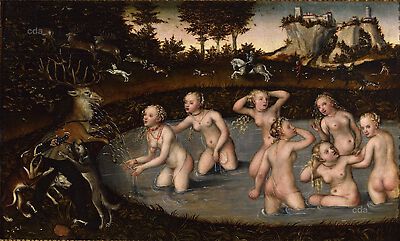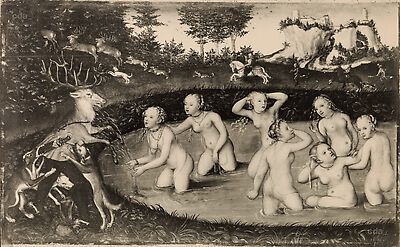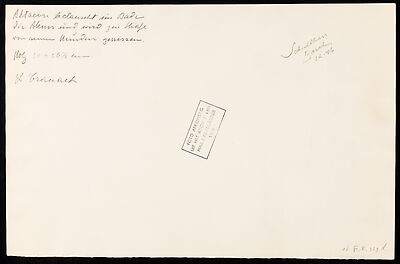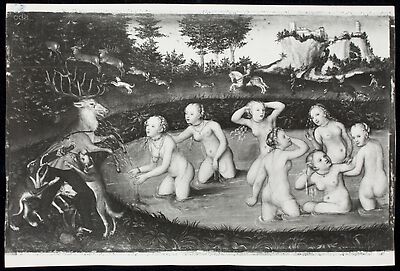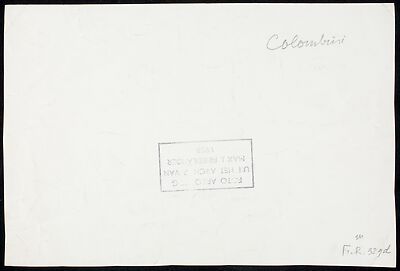After a long and strenuous hunting party Actaeon, grandson of Cadmus, king of Thebes, roamed through the woods until he reached, inadvertently, a grove that was sacred to Diana, goddess of the hunt. It was here that she used to bathe, in the company of her nymphs. Being caught unclad
After a long and strenuous hunting party Actaeon, grandson of Cadmus, king of Thebes, roamed through the woods until he reached, inadvertently, a grove that was sacred to Diana, goddess of the hunt. It was here that she used to bathe, in the company of her nymphs. Being caught unclad by Actaeon; the goddess threw a handful of water at the young hunter, transforming him into a deer. Actaeon's own hounds now turned upon their master, not recognizing him and killing him as they were trained to do with game.
The story, as told by Ovid, Metamorphoses (III, 157-252) enjoyed a considerable popularity among Renaissance painters. [...]
Cranach chose to depict both the hunt, in the background, and the subsequent dramatic confrontation between Actaeon and Diana in one scene. In the foreground, Diana is throwing water at the hunter who is already half transformed into a deer and savagely attacked by two dogs. But the main attractions of the painting are the puppet-like goddess and her nymphs, a cortège of female nudes, elegantly gesturing in the semicircular pool.
[Exhib. Cat. Rome 2010, 252, No. 40]
